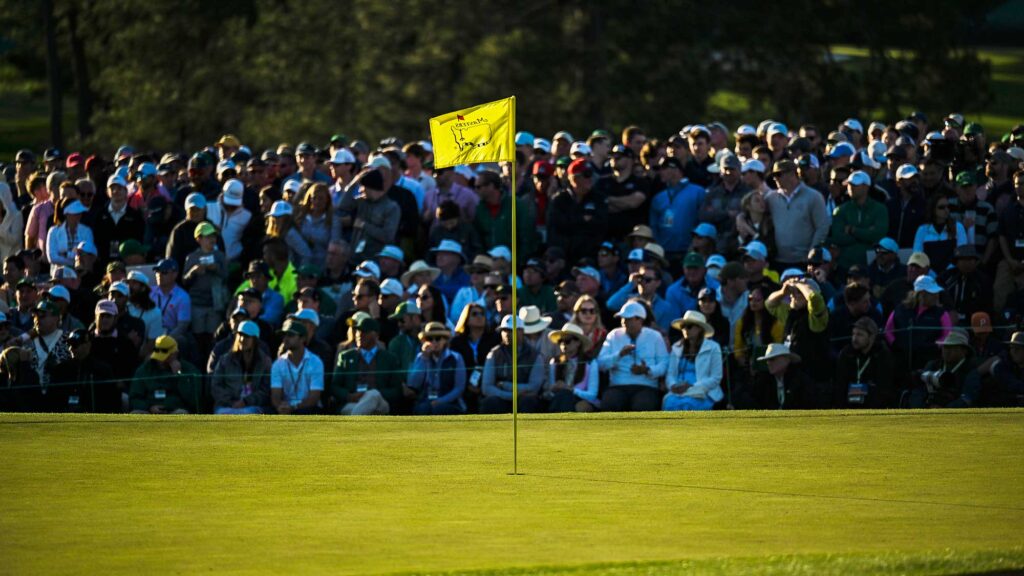Aussies love a punt on golf’s biggest names, as evidenced by these popular domestic competitions. Here’s what participating taught us.
It was a moment of stupidity that turned fortuitous. Ahead of the Players Championship in 2015, I was attempting to place a $20 bet on Rickie Fowler: $10 for a win and $10 for a top-five finish. But I got careless. Perhaps distracted by the juicy 40-1 odds, which I felt was an inflated price based on Fowler’s form at the time, I accidentally put all $20 on Fowler to win and nothing for the place.
Rather than dip into my wallet a second time, I opted to stay with just the ‘on the nose’ bet. As that Players Championship unfolded, I became increasingly frustrated at myself. Fowler lurked near the lead but needed an unprecedented six-under-in-the-last-six-holes explosion to push towards the lead. It eventually became clear he was going to run a place, but would he win? Fowler would ultimately force a three-way playoff with countryman Kevin Kisner (who missed a makeable putt on the 72nd green to win) and former Players champion Sergio Garcia, before prevailing in extra holes.
He was relieved – you might recall this was the week in which Fowler had been labelled the most “overrated” player on the PGA Tour in an anonymous poll of his peers – and I was relieved. My mistake had turned into a masterstroke, and I pocketed the healthy collect.

Jubilation on my behalf aside, you’re surely wondering why I chose Fowler that week. The short answer is, I’d tipped him to win. The longer version is, I’d picked him in a tipping competition that I co-founded in 2007 and still help run today. The premise is simple: you choose one player at each PGA Tour event and you ‘win’ the prizemoney they collect. The catch is, you’re only permitted to choose each golfer once per season. The highest prizemoney tally at the end of the season wins the comp, while there are a few side attractions such as the tipster who lasts the longest without picking a player that misses the cut, largest cumulative prizemoney haul from the four Majors, and more.
The competition began with a mere 15 runners that first year and peaked at 113 participants for the 2017-2018 season. It could be bigger – much bigger, based on demand – but we like to keep it manageable. That inaugural season saw the leader amass $US7.6 million in fictitious earnings; last season it was $US19.1 million, a figure that will surely be surpassed this season thanks to the drastically inflated purses on the PGA Tour for 2022-2023.

The beauty of such a format, commonly known as ‘one-and-done’, is in its simplicity. You can invest as much or as little time into selecting your chosen player each week as you like (for instance, I correctly picked Charley Hoffman to win the Texas Open in 2016 by taking a grand total of 30 seconds to scour the field then tip while on holiday). And unlike a footy tipping competition where forgetting to tip annihilates your season, missing a tip in our golf comp has the same outcome as picking a player who misses the cut, which is a certainty at several points each year.
We have resisted the move to run it online and instead update an Excel spreadsheet each week, replete with e-mail banter each time it is circulated. I’ve been told by several participants that it’s the best competition they’ve been involved in, however it is becoming more challenging to convene. The PGA Tour’s three-month hiatus in 2020 amid the COVID-19 pandemic also put an unexpected pause on the tipping comp and removed much of the strategy behind player management. Then last year’s flow of defections to LIV Golf put more players out of the picture most weeks. This season, the discrepancy between prizemoney at tournaments is placing an unfair emphasis (from a tipping perspective) on certain tournaments. For example, in February I picked Max Homa at the Genesis Invitational and Chris Kirk at the next week’s Honda Classic. It was a fruitful fortnight, yet Homa banked considerably more for coming second in Los Angeles ($US2.18 million) than Kirk did for winning in Florida ($US1.51 million).
There’s also the frustration that comes with watching your player miss the cut. At January’s Sony Open in Hawaii, I selected Kim to win. Unfortunately for me, I went with Tom (who missed the cut) and not Si Woo (who won). Jon Rahm – now the Masters champion – also did my tipping season no favours when he withdrew after an opening 71 at the Players Championship citing a stomach bug, earning me (and him) precisely zero dollars.
Ah, the Players Championship. The fulcrum upon which all one-and-done tipsters’ seasons rests. My Rickie Fowler heroics are sadly my lone success at the most lucrative event of the season. I now seem to be cursed at that tournament (thanks, Jon). I’ve been running our tipping comp for long enough to realise that the timing of and prizemoney on offer at the PGA Tour’s flagship event make it crucial to tipping success. This year, we had several tipsters who correctly chose Scottie Scheffler at TPC Sawgrass, and a couple accurately exercised their once-per-season double-money play to pump up the Texan’s $US4.5 million collect to $US9 million – more in one week than our inaugural winner tallied for his entire season.
Entry into our comp is a modest $100 per year and the winner collects about $2,000 with the top 10 at season’s end all receiving prizemoney. There’s also a weekly jackpot for snaring a unique winning tip and more money to be won from the various side competitions. We could easily inflate the entry fee and therefore grow the prizemoney pot, but tipster consensus suggests the balance is about right.
If there’s one trait you want in a one-and-done golf tipping competition, it’s stamina. The PGA Tour rests for just eight weeks a year – usually a fortnight between seasons each September then six weeks from late November until early January. Otherwise, there’s at least one tournament (and sometimes two) every week. That will change from 2024 when the circuit reverts to a calendar-year timing, yet the monotony and grind of lodging a weekly tip has worn down many a tipster. Still, others thrive on the activity and love how – unlike footy tipping comps that are more seasonal by nature – our one rarely sleeps.

A thirst for more
As the Masters rolled around this April, I was invited to participate in a Masters-centric tipping competition with an enormous prizemoney pool. Run since 2015 by a dozen or so friends who viewed it as “a fun way to follow the Masters”, the 2023 comp drew 1,782 entries. With an entry fee of $50, that yielded a total cash pool of $89,100. Several people – or syndicates – entered multiple times, one syndicate spending as much as $1,000 to bolster its overall chances.
The format requires participants to tip five Masters entrants spread across four bands, two top players and one player from each of three descending pools based on Sportsbet’s tournament odds. Entries are lodged online and your overall score is the combined score to par of your five players, with a few caveats for missed cuts and withdrawals (more on that in a moment).
I opted for Scottie Scheffler and Jordan Spieth from the top echelon and Corey Conners, Keith Mitchell and Kevin Na from the supposed lesser lights. Why those five? Scheffler was an obvious choice, while Spieth’s magnetic ability to find a spark around Augusta National regardless of form reminds me of Phil Mickelson (who I obviously should have selected). Jordan can never be discounted there. The rest were hunches… OK, complete guesses. Conners had just won in Texas the week before and while I usually always feel that’s not a great reason to tip a player, he had a good prior record at the Masters. Mitchell had been in solid form but without a win – perhaps this was the week? And Na has a sneaky-good record at Augusta, as well as the hint of a chip on his shoulder. He was my (self-designated) LIV Golf tip. I also wanted to go against the grain a little. In such a large field of tipsters, I figured it didn’t pay to simply opt for the best players in each pool; there had to be a point of difference to my five selections.
Well, that thinking suffered a fatal blow almost instantly. Teeing off in the first group of the opening round, Na was four-over par after nine holes and promptly withdrew (thanks, Kevin). Under the competition rules, I was assigned four-over as Na’s permanent score for the week, which proved to be too heavy an anchor to carry. Conners and Mitchell struggled as well, negating the bright starts of Scheffler and Spieth. Despite Jordan’s Sunday surge to finish equal fourth, I ran a measly 917th in the competition with an aggregate of four-over par. The winner banked $40,095 thanks to a 27-under total off the back of choosing Rahm, Spieth, Joaquin Niemann, Russell Henley and Mackenzie Hughes. The co-runners-up on 26-under still collected $13,365 apiece, while the top 15 all received payouts (11th to 15th each collecting $891), with last place getting their $50 back.
Despite requests to expand and run similar contests for more of the Majors, the men behind it – who spoke to Australian Golf Digest on the condition of anonymity – keep it to just the Masters. There’s too much effort involved in running things (for which they take no administration fee), plus the Masters has a far more manageable field size than the other Majors. The number of participants has grown by about 30 percent each year and any operational kinks have been ironed out over time. A lawyer has even examined the process and declared that it ought to be viewed as a tipping pool rather than traditional gambling, however the organisers are strongly considering adding a charitable element from next year, with perhaps 5 to 10 percent of the total entry fees being donated to charity.
Sport and gambling have walked hand-in-hand for years, with golf among the easiest pastimes upon which to wager. We all know myriad betting games to participate in on the course, while the professional game allows for more punting to take place to add an extra element to the viewing experience. If you like the sound of these two competitions – one a season-long affair and the other requiring just a week’s attention – then chances are your appetite for adding some monetary spice to your golf habit is suitably ripe.



